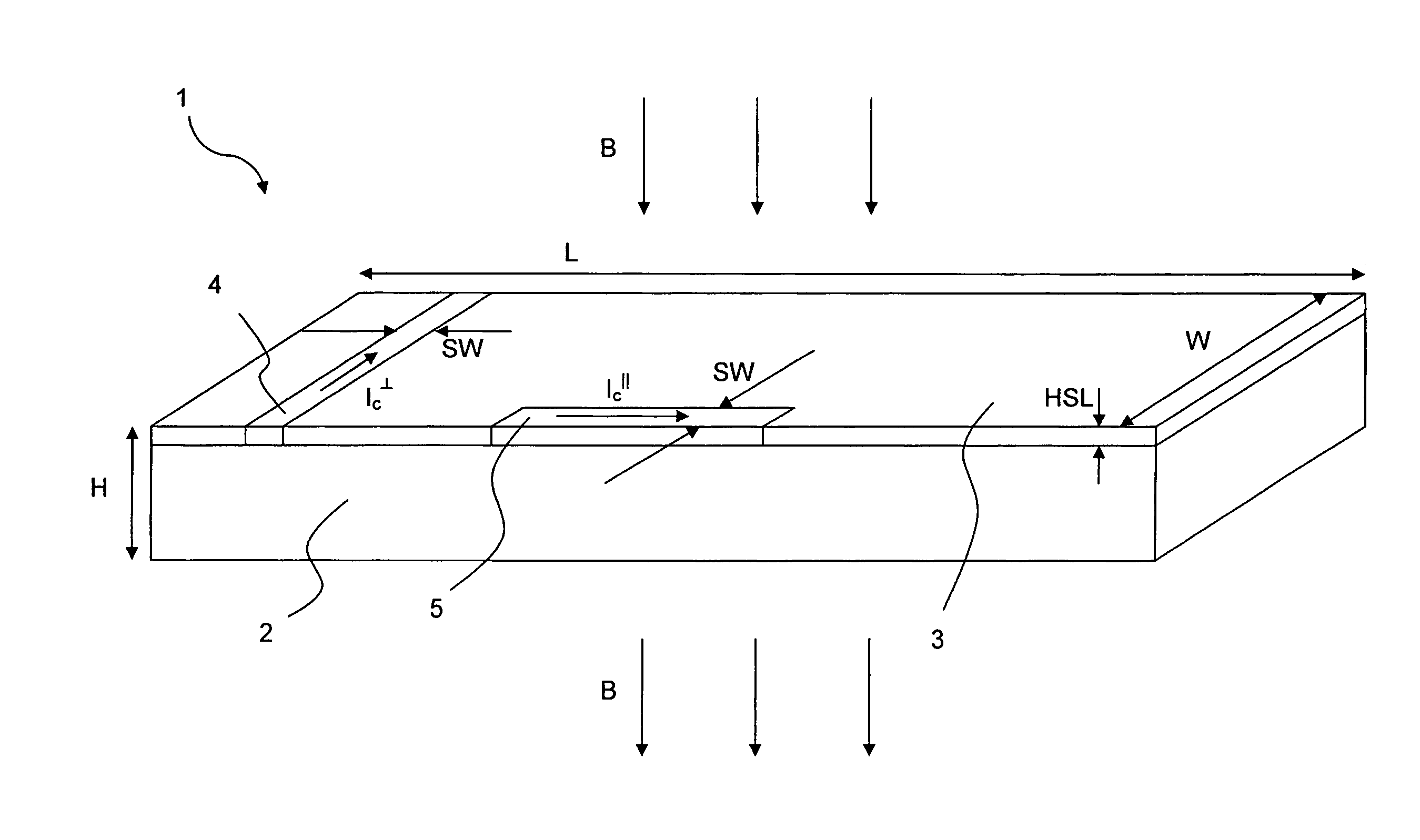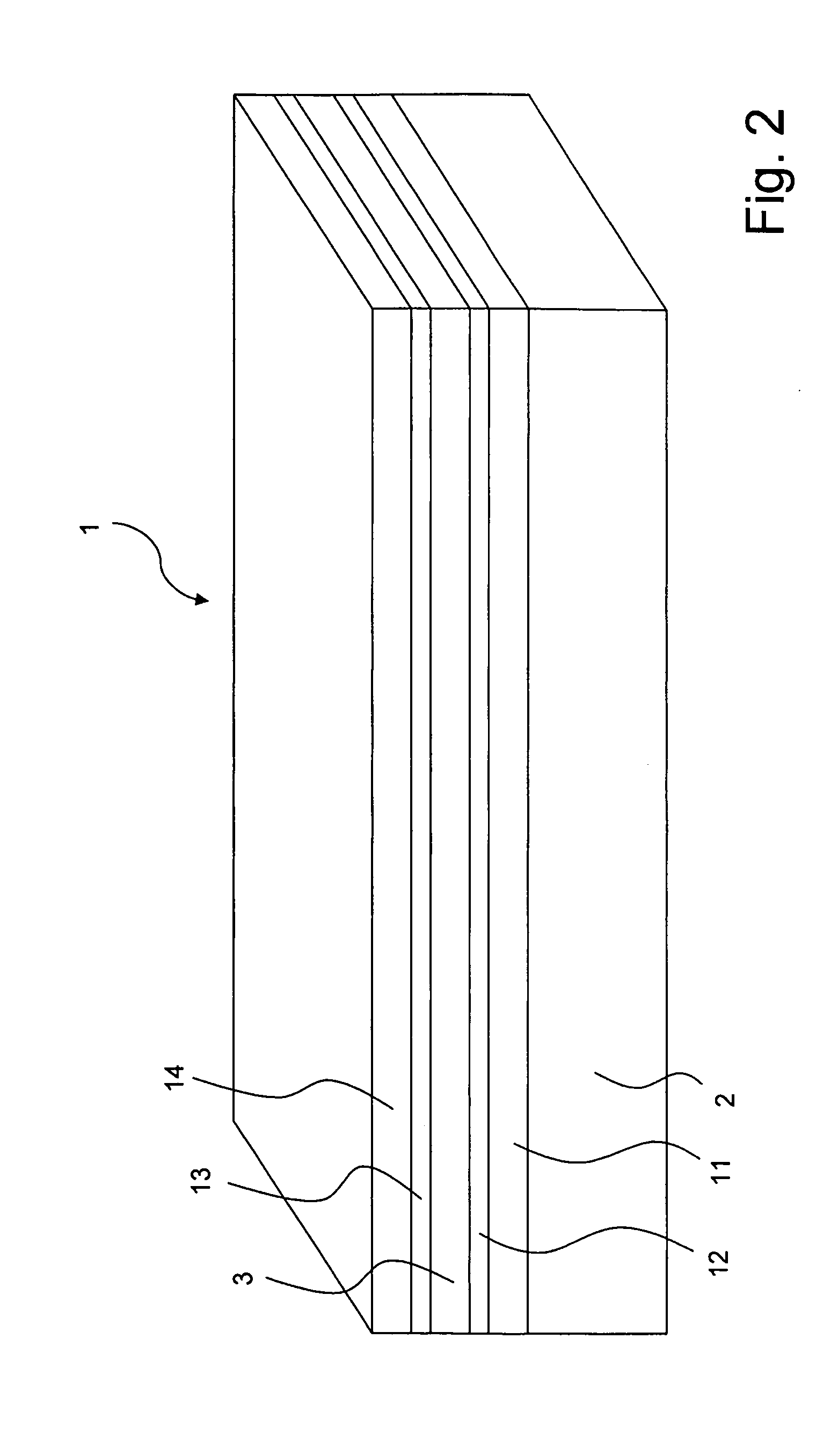Tape-type superconductor with anisotropy of critical currents
a superconductor and critical current technology, applied in the direction of superconductors/hyperconductors, superconductors/coils, magnetic bodies, etc., can solve the problems of superconductors becoming normally conductive, superconductors experiencing other types of losses, and losses increasing cooling costs, etc., to achieve good loss reduction
- Summary
- Abstract
- Description
- Claims
- Application Information
AI Technical Summary
Benefits of technology
Problems solved by technology
Method used
Image
Examples
Embodiment Construction
[0056]FIG. 1 illustrates schematically an inventive tape-type superconductor 1, comprising a substrate 2 and a continuous (non-intermittent) superconducting layer 3 deposited on the substrate 2. Note that FIG. 1 (just as the following figures) is not to scale. Typically, the height H of the total superconductor 1 is typically about 100-200 μm, whereas the height HSL of the superconducting layer is typically about 2 μm. The substrate 2 (and thus also the superconducting layer 3 which covers the substrate completely here) has a length L along an elongated direction (also referred to as “parallel” direction) here from left to right, and a width (or tape width) W perpendicular to the elongated direction (also referred to as “perpendicular” direction). Typically, the length L is on the order from several meters to several tens of meters, and the tape width W is on the order of several centimeters (and typically not more than 10 cm).
[0057]According to the invention, the superconducting la...
PUM
 Login to View More
Login to View More Abstract
Description
Claims
Application Information
 Login to View More
Login to View More - R&D
- Intellectual Property
- Life Sciences
- Materials
- Tech Scout
- Unparalleled Data Quality
- Higher Quality Content
- 60% Fewer Hallucinations
Browse by: Latest US Patents, China's latest patents, Technical Efficacy Thesaurus, Application Domain, Technology Topic, Popular Technical Reports.
© 2025 PatSnap. All rights reserved.Legal|Privacy policy|Modern Slavery Act Transparency Statement|Sitemap|About US| Contact US: help@patsnap.com



